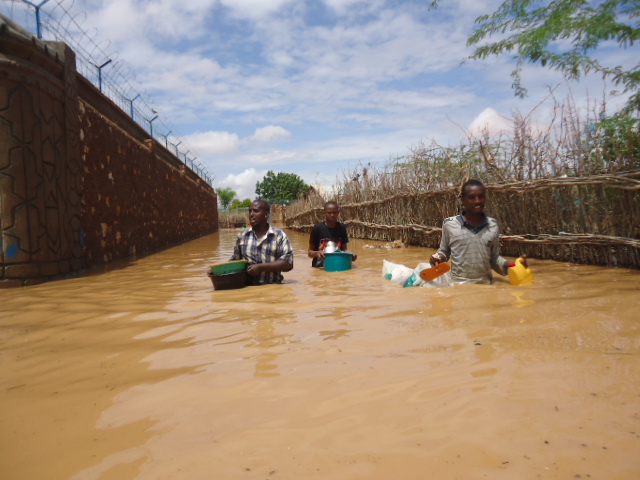Severe Flooding in East Africa Displaces Hundreds of Thousands, UNHCR Steps Up Relief Efforts
The resulting floods have overwhelmed rivers, caused dam failures, and inundated sewerage and wastewater systems.

Severe flooding has severely impacted countries in the East and Horn of Africa, where heavy El Niño-induced rains have compounded the challenges faced by refugee-hosting regions already on the front lines of the climate crisis. The following outlines the scale and impact of the flooding, its causes, and the UNHCR's response:
1. Torrential Rains Bring Displacement, Destitution, and Death
Through March and April, unusually heavy rains linked to the El Niño weather system have caused widespread devastation across East Africa. The resulting floods have overwhelmed rivers, caused dam failures, and inundated sewerage and wastewater systems.
Impact: Over 637,000 people affected, with approximately 234,000 displaced.
Affected Areas: The worst-hit countries include Kenya, Burundi, Somalia, and Tanzania.
Kenya: More than 23,000 refugees displaced from Dadaab and Kakuma refugee camps.
Burundi: Around 10% of farmland destroyed, severely impacting a predominantly agricultural economy.
2. The Region’s Vulnerability to Climate Change
Countries in the East and Horn of Africa have a long history of hosting refugees, but they now face increased vulnerability due to the climate crisis. Both refugee and host communities are affected, making investments in economic inclusion and social services crucial.
Displacement in Kenya: An estimated 20,000 refugees displaced from shelters in Dadaab refugee camps due to heavy rains.
Burundi: Nearly half of the refugee population of about 90,000 live in areas affected or likely to be affected by flooding.
3. Extreme Weather Exacerbates Vulnerability
The climate crisis is intensifying extreme weather events globally, disproportionately affecting the poorest and most vulnerable populations. In East Africa, the pattern of heavy rains and flooding follows months of severe drought, making parts of the region increasingly unlivable.
Cycle of Displacement: Extreme weather events force repeated displacement, further destabilizing affected communities.
4. UNHCR’s Climate Resilience and Emergency Response
The UNHCR is actively addressing the ongoing threats of climate change through various initiatives, including the $100 million Climate Resilience Fund, aimed at reducing the environmental impact of emergency responses and providing sustainable resources and clean energy.
Emergency Relief: Distribution of emergency relief items such as plastic sheeting, blankets, and sleeping mats to refugees affected by floods in Kenya’s Kakuma refugee settlement.
5. Urgent Need for Additional Support
With the unusually severe rainy season expected to continue through May, the potential for further destruction and loss of life is high. There is an urgent need for additional support to assist those displaced by the floods.
Fundraising Efforts: UNHCR has launched a public fundraising page to facilitate contributions. The funds will support the distribution of essential supplies, shelter reconstruction, and cash assistance to the most vulnerable families affected by the floods.
The severe flooding in the East and Horn of Africa underscores the urgent need for climate resilience measures and immediate humanitarian aid to support both refugee and host communities. As climate change continues to drive extreme weather events, the region requires sustained and increased investment in infrastructure, social services, and emergency response capabilities to mitigate the impacts on the most vulnerable populations.










